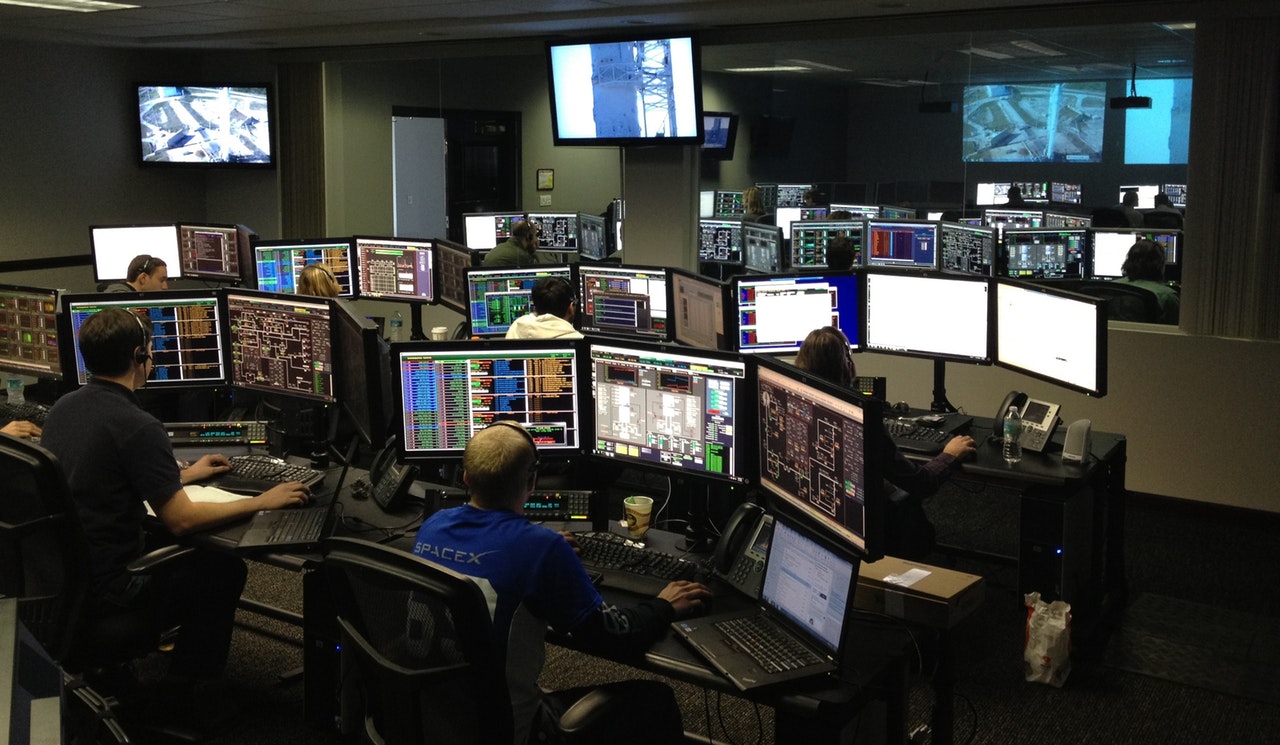Author: Rebekah Mechtensimer, Reporting for the Pump Industry
Some people have a hard time grasping IIoT because it’s a large topic that encompasses many ‘moving parts’. There are numerous disruptive technologies in the marketplace right now and that number continues to rise. I spoke with Preston Reine from IHS Markit, a global leader in information, analytics and solutions for the major industries and markets that drive economies worldwide, to really dig into IIoT and smart technology’s role in manufacturing.
Bekah: Let’s start by defining the Industrial Internet of Things (IIoT). Wikipedia defines IoT as “a system of interrelated computing devices, mechanical and digital machines, objects, animals or people that are provided with unique identifiers (UIDs) and the ability to transfer data over a network without requiring human-to-human or human-to-computer interaction.”
Preston: From an IHS Markit standpoint, IIoT is anything that enhances communication or the collection of data.
Our official 4 pillars of IIoT are “Connect”, “Collect”, “Compute”, “Create”. So any developments in the industrial automation field that promote the collection and manipulation of data would be a part of what we mean when we say “Industrial Internet of Things”
Bekah: What about AI? Do you think manufacturers need to have Artificial Intelligence to grow their businesses?
Preston: The big thing for manufacturers to understand is what problem they are trying to solve, as opposed to “how can I use this technology?” That being said, there are several benefits that come with AI, in terms of safety, remote monitoring, and maintaining data and skill sets. As you know, there has been a huge loss of skilled workforce in America over the past decade, and AI is helping some companies offset that loss. One great example is in a recent article written by Alex West, titled “AI: Job killer or savior?”. In his article, he discusses ways that AI can provide learning opportunities in place of missing industry ‘veterans’. This technology also keeps people out of hazardous environments with remote monitoring. This shift in manufacturing is inevitable, and while it varies from country to country, there is very much a race in manufacturing to see who can be more efficient and more productive.
Bekah: You bring up some good points, but how does it help the actual worker on a day to day basis?
Preston: It takes a long time to onboard new talent. Bringing new employees up to speed and giving them real world experience isn’t something you can cram in overnight. So, finding a way to streamline past experiences to train personnel will actually support job creation. It’s a benefit when a company can automate to support its employees in addition to improving productivity; a way to monitor and support its people and equipment in a predictive way instead of a reactive one.
Bekah: Where does the perception of IIoT ‘taking away jobs’ in manufacturing come from and why do people still believe this myth?
Preston: Some people assume that ‘manufacturing is dying’ because it’s easy to blame robots and automation. I’m sure there was pushback in the first Industrial Revolution, but here we are in the fourth Industrial Revolution and society adapted each time before. Regardless of what people’s perceptions are about this industry, America is still the second strongest manufacturing country in the world. Even though we’re currently looking at a bit of an economic ‘slump’, it will be the early adopters of AI and IIoT that will continue to lead into the future. Unemployment is very low right now, so the question of employers is more, “How can I fill these vacancies?” As other regions become more efficient and productive, those that can’t keep up will fail and will therefore be unable to employ more workers anyway.
Bekah: Can you talk about the pace of adoption?
Preston: These things play out organically. It’s a gradual process. Any of the past Industrial Revolutions show this to be true. For example, think about the textile industry and workers losing their jobs when the loom was invented. While some job loss was inevitable, new jobs were created. Unfortunately, there’s a lack of talent and a big need for an influx of youth and expertise. From IHS Markit’s perspective and the feedback we’ve been getting, the main issues that companies are facing when launching a new IoT platform is that there isn’t enough expertise and they need the right skillsets. Throughout history, that’s always been the case. The dynamic of jobs tends to change and the demand from the end-user tends to change as well. In fact, there are lots of high-paying options for young talent in Manufacturing – especially in the U.S. right now. Implementation of new technologies will actually create jobs, or at least save them by improving on international …competitiveness… if we can get over the perception problems.
Bekah: Please elaborate!
Preston: Sure, the perception in the U.S. is that manufacturing is ‘outdated’ or ‘dirty work’. There’s stigma that challenges the appeal of this field for younger generations. Add in fact that the manufacturing sector is in competition with a lot of others including financial, medical, and retail – all of which are competing for the data science skillsets that are in short supply, and you have compounded issues finding young, talented replacements to the generation that is currently retiring and taking their knowledge with them.
Bekah: So how can IIoT help maintain tribal knowledge?
Preston: It’s more about finding a way to streamline past experiences. For example, you could log how an issue was resolved rather than that information just staying in a veteran employees’ head. You can have predictive maintenance set up with the AI that would recognize patterns from past issues and how it was fixed and make recommendations based off of that. Remote centers of excellence are a good example, where an expert can view an issue that a junior engineer across the world is seeing and provide real-time guidance and support. This could also be utilized for training processes. More user operability so that the end user knows exactly how to approach different complications, downtime incidents, etc. When you trend data, and analyze it, you can begin to make decisions about your operations and people proactively.
Bekah: So how do you get it running and working effectively?
Preston: Well, that answer is going to be different for every business, but the general concept is to first make sure that all of your machines are properly connected and communicating with each other. Next, collect the data and have someone on your team analyze and explain that data. This means finding an efficient way to mine the data so that you are only processing and dealing with the ‘important’ information. Making informed decisions from expertly analyzed data can keep workers on the floor safer and enable maintenance personnel to respond more quickly to prevent downtime. The biggest result we’ve seen on the manufacturing side is that IIoT reduces downtime.
Bekah: What are the issues around implementation?
Preston: One big question many have is ‘who’s going to host their data’ and ‘who’s going to own their data’ which can stem into security concerns. These questions really depend on what company you choose to work with. In terms of getting the end-user educated on how to use the system, it’s pretty user-friendly. It can be as simple as downloading the app to your phone and you can see the specs, metrics, and performance ratings of all of your equipment. You’ll also get notifications when something’s due for maintenance or needs replaced.
Bekah: What about cybersecurity?
Preston: Cybersecurity is still a critical factor, and those implementing IIoT should educate themselves on security issues if they want their products and services to be as safe as possible for their customers.
Bekah: Do you think every manufacturer needs to adopt IIoT?
Preston: There are some instances where it might not apply. We’ve done surveys that found that about 50% of proofs of concepts yield differing results in terms of whether this is a viable strategy or not. Of the IIoT projects that launched after the proof of concept indicated there would be a positive ROI, a slight majority said that they deployed their IIoT project and saw a sufficient payback. It’s safe to say that there are companies that maybe weren’t ready, and about 50% of them ended up failing with their strategy to bring that to market. The point of saying this isn’t to say that IIoT doesn’t work – it does. Automation only fails when the talent and infrastructure are not there. So, if you’re a smaller company that doesn’t have the funds to make a large investment, nor the talent and infrastructure to make it successful, then it might not make sense to do a huge overhaul. However, there are smaller things you can do, like integrating sensors on your motors. Start small and work your way up.
Bekah: What Countries are dominating in disruptive technologies right now?
Preston: We’ve seen a big pick-up in Asia-pacific. IoT in general, we see a lot more readiness for adoption in China, Taiwan, Japan, and that region in general. There are motor plants in Vietnam that don’t have any workers on the floor and don’t even need to turn on the lights due to complete automation. I think the reasoning behind this high readiness for adoption is just a culture difference. I think that there’s a big difference in the way in which business is done between the Asian regions and Europe and the United States. There’s no real impetus for change when you look at things like efficiency and automation. You get people that are stuck in their ways, not looking to shake things up because it’s how factories have been set up for so long, and going through an overhaul is expensive. They don’t see the ROI to motivate them to implement. There’s more Greenfield investment in Asia-pacific, as well.
Bekah: From your surveys and research, what’s the average ROI on implementing this technology?
Preston: This largely depends on the scale of the company and the level that they’re rolling out. Some can take 6 months, where others could take 2-3 years. If it’s a full-on new plant and there are only robots in operations and just a few plant managers, it’s going to take quite a while I would think. A lot of people look at smart manufacturing as a whole as transformative technologies; be it AI, Blockchain, general IoT. Many people have this impression that it’s not scalable and that it’s too long of an ROI – which is not the case. To give an example, we toured a brewery a few years ago in Austin, Texas, that implemented a line of Siemens IIoT products into their three brewing boilers. This created a quick ROI and paid for itself within about a year. You typically wouldn’t think of something so small scale and privately-owned as a brewery that was so tech-forward, but they wanted to be able to monitor their temperatures, ingredients, etc., from their phones. Be it a small 5-person company, or a large corporation, you can take advantage of smart manufacturing. There are cases of it happening all over the country.
Bekah: Now obviously IHS Markit is a resource on these topics but how else can people find this type of information to learn if it’s the right thing for them to do for their business and potentially adopt this technology?
Preston: Well first I would say to start by identifying the problems that need to be solved before focusing on the technology you want to introduce. Focusing on the technology first is a high indicator of failure. IHS Markit certainly is a good resource, and we have a great contact base for IIoT intelligence services. There are also a few different events that I would suggest looking into, including Industry of Things World, IoT World Conference & Expo, Hannover Messe, SPS IPC Drives, and the Industrial Internet Consortium (IIC). IIC is doing a lot of work on testbeds and a multitude of events are being rolled out (including by our new parent company, Informa) on this topic..
Concluding Thought
Whether you believe in smart technologies or not, it’s the future of not only manufacturing but all industries. It’s not about changing something that isn’t broke or shaking things up unnecessarily, it’s about making things better, safer, and more profitable. It’s about acting proactively instead of reactively. While IIoT is still a relatively new technology to the manufacturing world, it isn’t a fad or a phase that people will move on from. It’s where the industry is headed. So how is your company getting ahead of it? Use the comments section below to share your thoughts.
You can read some more from Preston about the state of IIoT in his article The state of the IIoT: Adoption hurdles and common pitfalls. What are some other topics related to IIoT you’d like to hear about? Let us know!





Comments